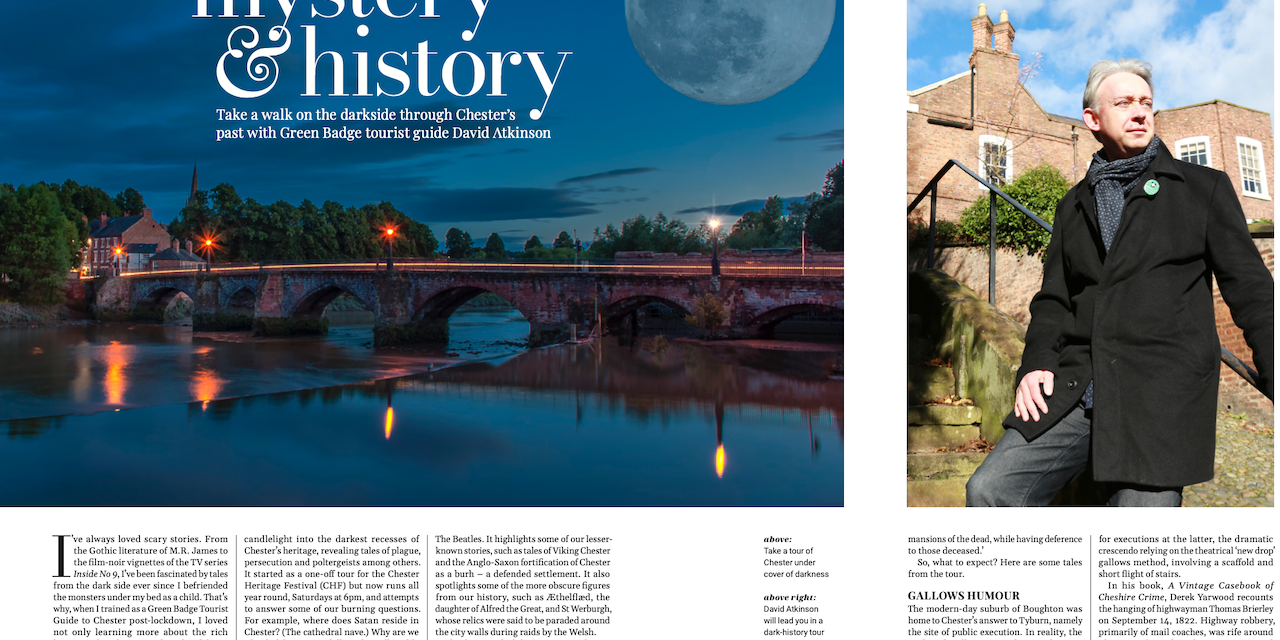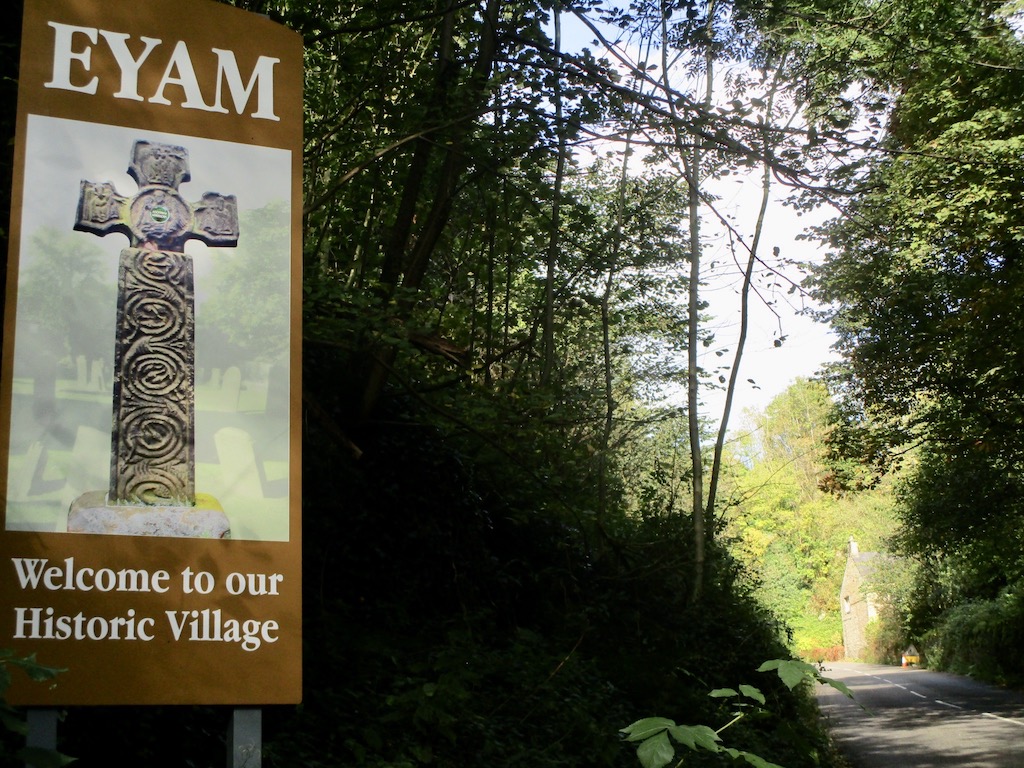
Dark Chester was featured in the April issue of Cheshire Life magazine [pictured above].
I wrote a feature about the rise of dark tourism in Chester and how my tour taps into this trend to explore the darker side of our history.
Here’s an extract:
Dark Chester is a storytelling walking tour of the city, which traces a journey through all periods of Chester history from the Romans to The Beatles.
It highlights some of our lesser-known stories, such as tales of Viking Chester and the Anglo-Saxon fortification of Chester as a burh, a defended settlement.
It also spotlights some of the lesser-known figures from our history, such as Aethelflaed, the daughter of Alfred the Great, and St Werburgh, whose relics were said to be paraded around the city walls during raids by the Welsh.
The focus is dark history. By exploring the dark side, the tour reflects the growing interest in dark tourism, or visits to places associated with dark tales.
As Dr Philip Stone of the Institute for Dark Tourism Research, explains in his book, 111 Dark Places in England that You Shouldn’t Miss:
“Dark tourism allows us to sightsee in the mansions of the dead, while having deference to those deceased.”
Read more at Cheshire Life magazine.
Liked this? Then read Take a walk on the dark side for the BGTG blog.


